Locks
Instruments of Security Reflecting Human Insecurity
Locks, fundamentally, are testaments to human creativity designed to tackle intrinsic human traits: insecurity, deceit, and distrust. The progress in the sophistication of locks mirrors the progression of human society, indicating shifts in social hierarchies, economics, and cultural values. While they function as deterrents against theft and unauthorized entry, locks have also become symbols of security, technological progress, and artistic craftsmanship.
The Historical and Economic Impact of Locks
Throughout history, locks have been pivotal in protecting belongings, properties, and even ideas. Locks have been in existence for over 6000 years, with an early example found among the ruins of Nineveh, the capital city of ancient Assyria. However, some historians assert that the earliest known locks originated in ancient Egypt and Mesopotamia, using wooden pin tumbler mechanisms to safeguard precious items. These primitive locks were not merely functional devices; they also signified power and affluence. The capability to secure one’s property was a crucial element in upholding social order and economic stability.
As civilizations evolved, so did the sophistication of locks. For instance, the Roman Empire introduced metal locks and keys that offered greater durability and security than their wooden forerunners. This innovation mirrored the growing complexity of Roman society and its economic dealings. The urge to protect wealth amassed through trade, conquest, and commerce spurred advancements in lock technology. Medieval Europe witnessed further innovations with warded locks that were more tamper-resistant. During this era, locksmith guilds emerged, highlighting the importance of locks within the economic and social fabric.
In contemporary times, locks prevail across numerous economic sectors. They safeguard homes, businesses, safes, and digital information. The global security industry—which encompasses locks—is a multi-billion-dollar market, emphasizing the persistent need for protection against theft and unauthorized access. This economic aspect of locks cements their role as indispensable tools in sustaining economic activities and social order.
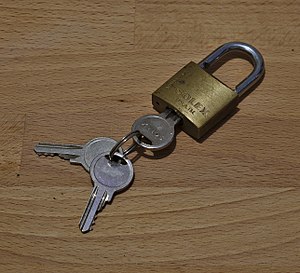
Locks as Art and Cultural Artifacts
Beyond their practical function, some locks have been admired for their artistic qualities. Antique locks are treasured artifacts offering glimpses into the artistic and cultural values of past civilizations. The skill involved in creating these locks often mirrors the artistic trends and technological prowess of their era.
In many cultures, locks and keys have been embellished with intricate designs and symbols. For instance, ancient Chinese locks often showcased elaborate designs with auspicious symbols, reflecting the belief that such embellishments could bring good luck and guard against malevolent forces. Similarly, in Europe during the Renaissance, locks were crafted with detailed designs and decorations, displaying the locksmiths’ expertise and the period’s aesthetic preferences.
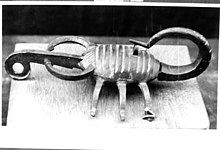
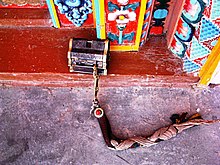
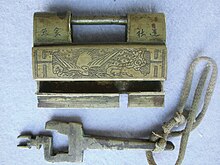
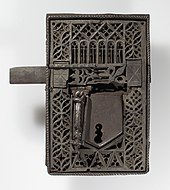
The artistic significance of locks is not confined to their historical appearances. Contemporary artists and designers continue to find inspiration in locks, producing works that explore themes of security, privacy, and humankind’s desire for protection. These modern interpretations frequently challenge traditional views of locks, transforming them into stimulating pieces of art.
The Paradox of Trust and Mistrust
Locks express a paradoxical aspect of human nature: the coexistence of trust and mistrust. While the presence of locks suggests a lack of trust, using them shows confidence in the mechanism’s ability to provide security. This duality is a core element of human relationships and societal constructs. Locks symbolize both the possibility of deceit and the human quest for a secure and orderly society.
This paradox has carried over into the digital age, where cybersecurity has become paramount. Digital locks, such as encryption and security protocols, safeguard sensitive information from cyber threats. The ongoing development of digital security measures reflects the continued struggle between trust and deceit in the virtual landscape. Just as physical locks have evolved over centuries to counter new challenges, digital locks are constantly improving to address emerging threats, underscoring this paradox’s dynamic nature.
The Paradox Resolved: Trust Through Distrust
The dual nature of locks—symbolizing both mistrust and trust—becomes clear when viewed through the prism of societal evolution. While the presence of locks suggests a need to defend against deceit, their usage also nurtures a sense of safety and trust within a community. By protecting personal belongings, locks facilitate economic exchanges, wealth accumulation, and the creation of private spaces—all aspects of any functioning society in today’s world.
Furthermore, the development of locks showcases human ingenuity and adaptability to evolving social and economic environments. The craftsmanship involved in lock-making underscores their cultural importance and elevates them from simple security tools to symbols of human creativity and progress.
Locks Without Keys: Economic and Social Impacts of Security Measures
Security measures that bypass traditional locks and keys, such as window grills, boundary walls, gates, guards, and guard dogs, are pivotal in safeguarding property and ensuring safety. These methods provide physical protection and significantly impact the economy by generating various employment opportunities. The diverse roles these security measures play, their economic implications, and their crucial role in maintaining social order and safety are vast.
The Armed Forces: The Nation’s Locks
The armed forces—including the army, navy, air force, and other military branches—act as the ultimate defenders of a nation’s sovereignty and security. Just as locks protect homes and possessions, the armed forces stand as a barrier against external threats and internal chaos, securing the state’s safety and continuity. The central role of the armed forces as a nation’s locks cannot be overstated; their contributions to both national security and society at large are profound.
Threats constantly evolve, necessitating that the armed forces adapt by integrating new technologies and strategies. Ongoing training and modernization are crucial for maintaining their effectiveness. The military often spearheads technological innovations that later benefit civilian sectors. Historically research and development in defense technology have led to breakthroughs in fields such as aviation, medicine, and information technology. These advancements typically originate from wartime or espionage efforts before trickling down to civilian use. Additionally, the armed forces boost the economy by providing jobs, instilling discipline and skills, and supporting defense industries.
Cyber Security and Passwords:
Modern-Day Locks in the Virtual World
In the digital age, cyber security has become a fundamental aspect of our daily lives, akin to the physical locks we use to secure our homes and valuables. Just as we rely on locks to protect our personal and valuable possessions from unauthorized access, passwords serve as the virtual locks that safeguard our digital assets.
Passwords are the first line of defense in cyber security. They are designed to restrict access to sensitive information and ensure that only authorized individuals can interact with digital systems and data. Much like a key to a lock, a strong password is unique, complex, and difficult to guess. It acts as a barrier against cyber threats such as hacking, identity theft, and unauthorized data breaches.
In essence, cyber security and passwords are the modern-day virtual equivalents of locks and keys, essential for protecting our digital identities and information. As the virtual world continues to grow and become more integral to our lives, understanding and implementing robust password security measures is imperative to safeguarding our digital well-being. By treating passwords with the same importance as physical locks, we can better defend against the myriad of cyber threats that exist today.
The Evolution of Locks and Locksmithing:
The Pursuit of the Unbreachable Lock
Locks and the locksmith industry have a long and storied history, dating back thousands of years. From simple wooden mechanisms in ancient Egypt to the sophisticated electronic systems of today, locks have continually evolved to meet the changing demands of security. However, despite these advancements, human ingenuity has not yet produced a lock that is entirely foolproof and impenetrable.
The earliest locks were rudimentary devices made of wood, designed to provide basic protection. As civilizations advanced, so did the complexity of locks. The ancient Romans introduced metal locks with intricate key designs, setting the stage for further innovation. The Middle Ages saw the development of warded locks, which were more secure but still vulnerable to skilled intruders.
The Industrial Revolution brought significant changes to the locksmithing industry. The introduction of mass production techniques allowed for more standardized and reliable locks. Pioneers like Linus Yale, Jr. and Chubb revolutionized the field with the invention of the pin tumbler lock, a design still widely used today. The 20th century introduced combination locks and, eventually, electronic and digital locking systems that offered enhanced security features.
Despite significant progress, the search for an entirely secure lock remains out of reach. Every lock, regardless of its sophistication, has weaknesses that can be exploited by determined attackers. Mechanical locks can be picked, bypassed, or forced open, while even the most advanced digital locks are vulnerable to hacking, malware, and other cyber threats.
The core difficulty in developing an unbreakable lock is the unpredictable nature of human creativity. Lock designers and locksmiths continuously innovate new technologies and methods to enhance security. Simultaneously, criminals and hackers persistently develop new techniques to breach these defenses. This perpetual cat-and-mouse struggle drives constant sophistication and complexity in the lock and security technology.
Additionally, a crucial balance between security and usability has to be maintained. Creating highly complex locking mechanisms is possible, but they often become impractical for everyday use. The most effective locks achieve a balance between offering robust security and being user-friendly, ensuring easy operation without sacrificing protection.
The evolution of locks and the locksmith industry embodies humanity’s relentless quest for safety and security. While we have made remarkable strides in crafting advanced locking mechanisms, the aspiration for an entirely foolproof lock remains unattained. As long as human creativity endures, so will the challenge of creating a lock that is both secure and practical. This tireless pursuit fuels innovation and progress in the field of security, ensuring that locks will continue to advance in response to emerging threats and challenges.
From Locks to Liberation:
Redirecting Resources for a Better World
Humanity’s deep-seated insecurities and innate tendencies towards greed and self-interest are apparent in the genesis of locks. The very invention was driven by the need to guard possessions against theft, signifying an underlying distrust within early societies. This pervasive suspicion compelled us to devise ever more sophisticated security measures, underscoring that our fundamental nature remains constant and unchanged. Locks have become a testament to our anxieties and insecurities, illustrating how we are prepared to protect our belongings from potential dangers.
Pursuing security through locks and other mechanisms is not merely a personal or societal obsession; it’s an industry encompassing vast resources of time, money, and energy. The security sector—including everything from locksmithing services to advanced surveillance systems—is flourishing precisely because of our collective need for safety and security. Both individuals and organizations sink substantial investments into protecting their properties and assets, signifying the depth of our fears. This intense focus on security diverts attention and valuable resources away from areas that could enhance human well-being and societal progress.
Imagine a shift in priorities where the immense effort devoted to maintaining security is redirected toward improving human lives. Envision reallocating the vast sums spent on locks, alarm systems, and surveillance into healthcare, education, and social welfare. Consider the transformative impact this could have on global poverty, disease eradication, and reducing social inequalities. We could foster a society less dependent on elaborate security measures by tackling the root causes of insecurity—such as economic hardship, lack of education, and glaring social inequities.
A world reimagined in this way would not merely reduce the need for lock-and-key mechanisms but redefine our societal values towards trust and collective well-being. Instead of living in constant apprehension and safeguarding against threats real or imagined, humanity could channel its creativity into building a more equitable world. Cooperation would replace suspicion; trust would supplant fear.
The ramifications are profound: reducing poverty through education creates a skilled workforce that can uplift entire communities. Investing in healthcare ensures healthier lives, thus contributing productively to society rather than being weighed down by illness. Furthermore, focusing on social welfare can bridge divides, fostering inclusivity and understanding among diverse populations.
Ultimately, directing our ingenuity away from perpetuating cycles of distrust towards enriching human experiences holds the promise of a better future. It fosters environments where well-being surpasses fear—a world where every lock represents protection and a commitment to constructing zones safe enough that such protections might someday become obsolete.
Redirecting resources from security measures towards quality education means unlocking potential leaders who can advance societies innovatively and responsively. When we ensure equitable access to healthcare, we cultivate healthy populations capable of contributing robustly to communal growth. Through targeted social welfare programs addressing insecurities at their roots—inclusive support systems that uplift rather than divide—we lay down foundations for genuine societal progress.
So while locks indisputably symbolize our deep-rooted fears today—a tangible manifestation of distrust—imagine if tomorrow they also stood as monuments commemorating an era we have outlived.
![]() Author:- Ranjan “Jim” Chadha – a peripatetic mind, forever wandering the digital universe, in search & appreciation of peace, freedom, and happiness. So tune in, and turn on, but don’t drop out just yet!
Author:- Ranjan “Jim” Chadha – a peripatetic mind, forever wandering the digital universe, in search & appreciation of peace, freedom, and happiness. So tune in, and turn on, but don’t drop out just yet!


Very well thought out and informative article keep up the good work
Great unravelling of the mysteries of something we all use many times everyday and probably never even think about as we turn the key. Great food for thought!